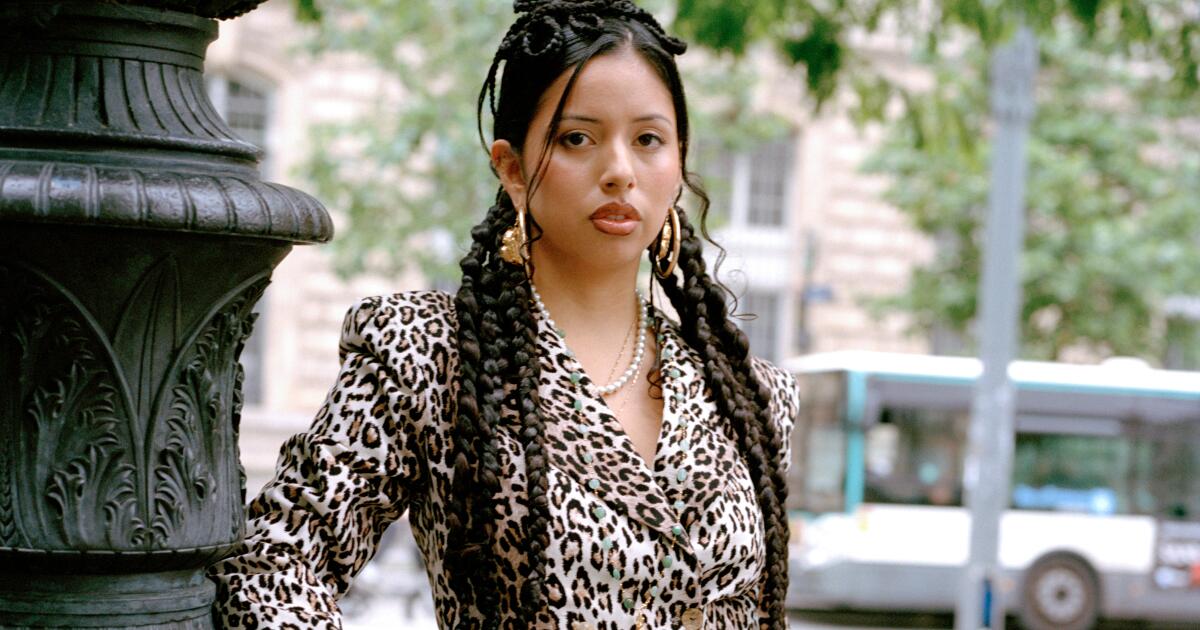Sometimes it pays to stay close to home.
The more Peter Capaldi listened as his wife, producer Elaine Collins, and writer Paul Rutman debated the plot of the new Apple TV+ thriller “Criminal Record,” the more he hinted that he was her man.
He was cast as Daniel Hegarty, a veteran police detective, who has a shady past. While Rutman wrote the script, Capaldi's voice and face were front and center.
“It's the first time it's really happened to me,” said Capaldi, whose adversary, June Lenker, a younger detective fighting misogyny and racism within the police force, is played by Cush Jumbo. “I know that's who they're envisioning, so I was able to respond to the material from a pretty early date.”
Capaldi also had to hide his emotions, a difficult task for an actor who played the Twelfth Doctor in “Doctor Who.”
“I had to hide what was really happening, but at the same time, something still has to be happening,” he said in a video interview from London, before chatting about Scottish artist John Byrne and following in the footsteps of the Romans. “You can't just sit there.”
These are edited excerpts from the conversation.
1
Vermeer's 'The Sleeping Maiden'
Without wanting to sound pretentious, it was the first film I developed a relationship with. I was in New York doing a show and maybe having melancholy moments and having too much fun and enjoying Broadway, but I wasn't that happy either. So I would often go to the Met and sit and look at that photo if I was feeling anxious. There was a spirit of wisdom and calm that spread.
2
Hopper's 'Approaching a City'
It doesn't seem to be a sunny day and there are no people on it. And it seems a little disturbing, but not in a sentimental way. It's this tunnel here. It emphasizes the feeling that something unexpected always comes.
3
'Las Meninas' by Velázquez
I went to the Prado and you enter the chamber where it is, and it's about thirty meters away, and it grabs you and pulls you there. I thought it was so vibrant, so full of mystery and strangeness. He's someone firing on all cylinders at the absolute top of his game, and your jaw drops.
4
'Did't It Rain' by Sister Rosetta Tharpe
The first time I saw her, some kind of church lady turned up at this dank, abandoned Manchester train station, put on a Gibson SG and started playing rock 'n' roll. And it has slides, curves, movements and distortion. She's doing things that Jimi Hendrix would have been very happy with.
5
'That's Life' by Frank Sinatra
When I grew up, the Beatles were the main thing, but my parents listened to Frank Sinatra. I felt that he and his lifestyle were something my parents and his friends aspired to, although they had to.) I had no idea really what that lifestyle was; or b.) absolutely no chance of that happening because they lived in Glasgow.
6
John Byrne
He is Scotland's greatest artist. [Byrne died on Nov. 30.] He painted and drew as he did, but he also wrote funny and successful plays. He had never seen someone who was so Scottish but at the same time so incredibly universal. His gifts were extraordinary. There was magic coming out of his fingers.
7
'The elephant Man'
Many people don't know that it was Mel Brooks who made “The Elephant Man.” He kept a low profile, if Mel Brooks can do it. And that was something interesting: an artist that we think of in a very particular way but who has all these other interests.
8
'The wire'
The fourth season, which is about education, is one of the most moving crime shows I have ever seen. Ed Burns, one of the co-writers, had been a detective and then became a teacher. They are fabulously responsible jobs, when done correctly.
9
'Demon Copperhead' by Barbara Kingsolver
He moved the elements of “David Copperfield” to the southern states of America, which obviously have a certain reputation. And the characters made it clear that much of that reputation was unjustified. That there were many incredibly good people (and this also applies to Dickens, in Victorian London) who were trying to survive in times that are very challenging.
10
walking along the wall
The wall that the Romans built to surround the City of London still survives in fragments and in streets that follow its route. In “London: The Biography,” Peter Ackroyd's theory is that things retain the essence of historical events. I walked along the wall with the book. The largest Roman fort is now the Barbican, which looks like half a fort. I also found a small plaque from the Cortina Theatre, where Shakespeare's plays were first performed. It was right behind a motor car wash.












